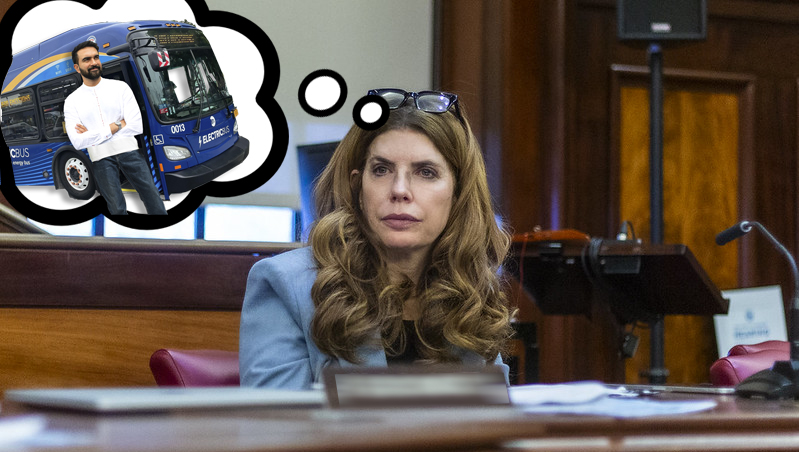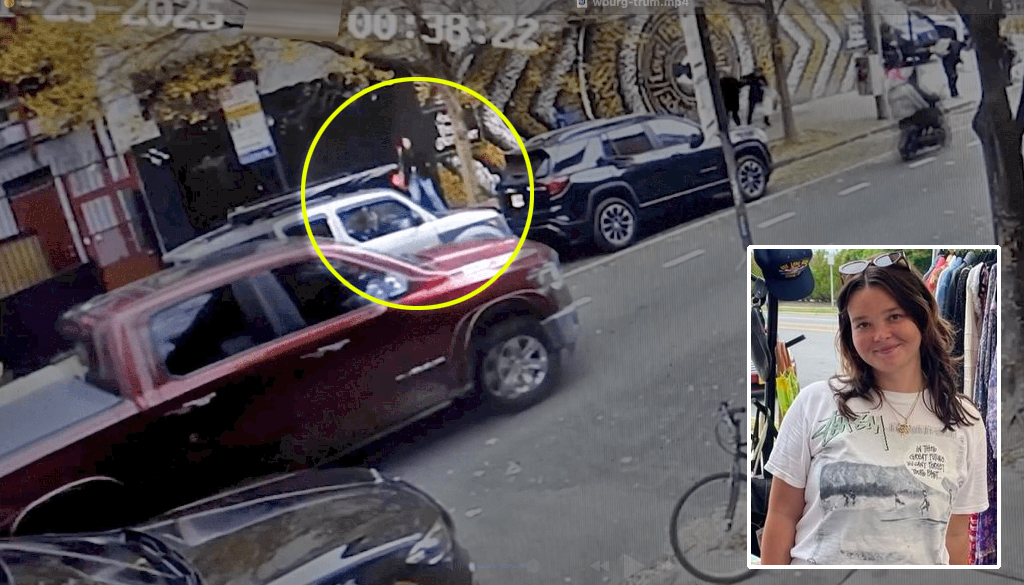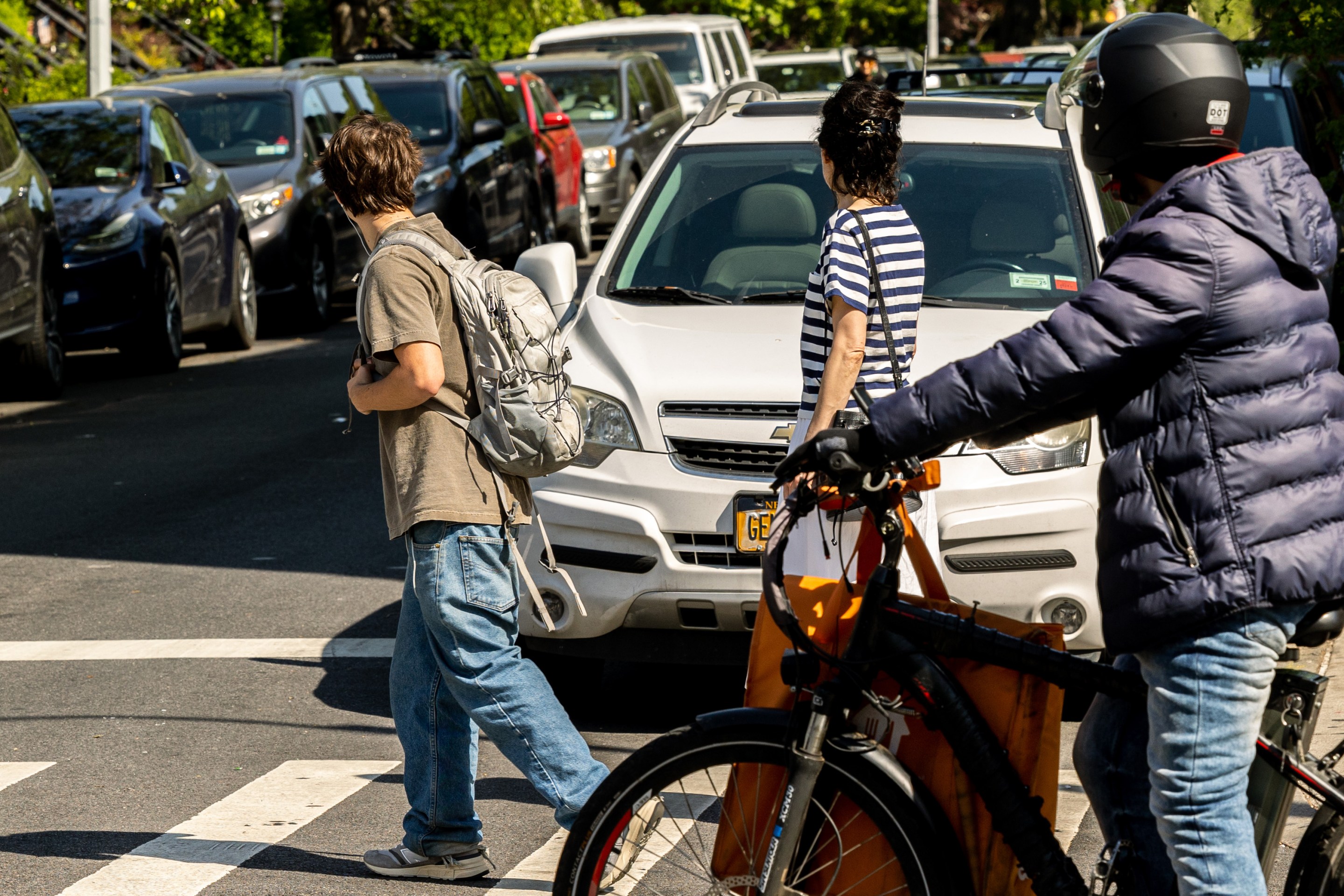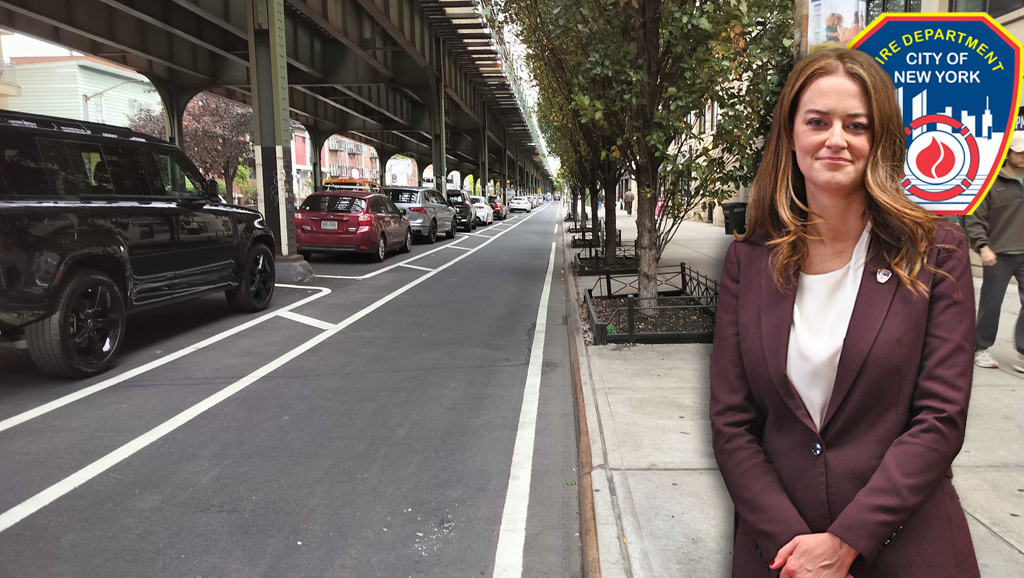A federally-funded redesign and reconstruction of two dangerous Empire Boulevard intersections is in jeopardy, running up against a combination of parking politics and gentrification fears.
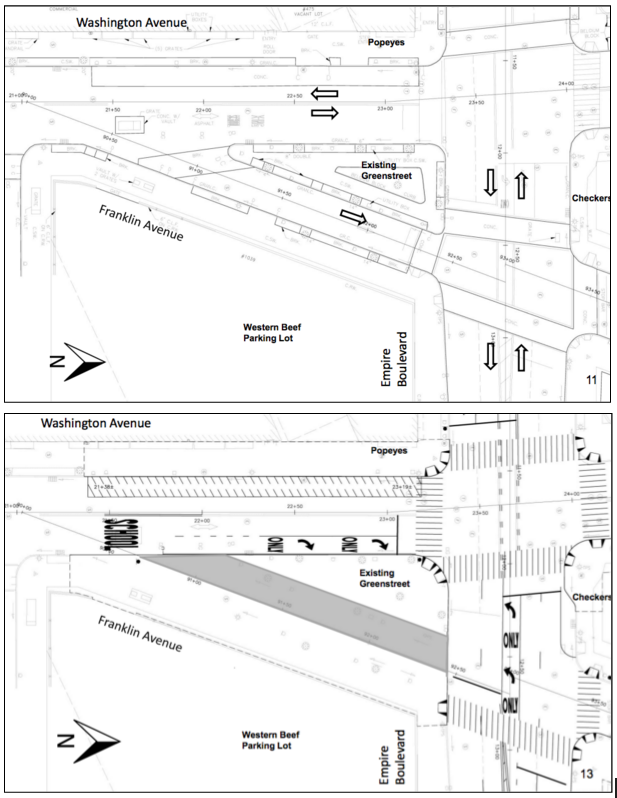
The plan would add sidewalk space by simplifying two complex intersections where several streets converge [PDF]. On the western end of Empire, a slip lane would be closed at the intersection of Washington Avenue and Franklin Avenue. To the east, pedestrian space would be claimed at the even more complicated tangle of streets where Empire meets Utica Avenue, East New York Avenue, and Remsen Avenue.
Empire Boulevard is one of the most dangerous streets in Brooklyn. At these two intersections alone, there were 490 injuries between 2009 and 2013. Removing slip lanes at both locations will eliminate shortcuts where drivers can cut quickly across pedestrians' paths, without fundamentally changing how traffic flows.
At Wednesday’s CB 9 Transportation Committee meeting, neighborhood residents and community board members joined around 10 representatives from DOT, the Department of Design and Construction, and the RBA Group to discuss the proposal, which the committee approved in a unanimous 4-0 vote in September. Chair Tim Thomas said he invited city officials to come back and make the case after the proposal drew criticism at a meeting of the full community board in November.
Supporters of the proposal presented a petition with nearly 300 signatures Wednesday night. Daniel Kristjansson, who sits on the committee, said in an email to Streetsblog that the project is a small but necessary step to make Empire Boulevard safer. "Empire Boulevard is deadly, and even with these changes it will still kill and subject many more to a lifetime of pain and disability," he said. "But these improvements will make a noticeable dent in the casualty figures."
The project has become swept up in the debate over the rezoning of Empire Boulevard, a flashpoint in predominantly black neighborhoods experiencing a rapid influx of more affluent, white residents. "I've been living on Washington Avenue all my life and living there has been a great pleasure -- until recently, when these changes [have] taken place," one resident, Felice Robertson, told the committee.
Other complaints were typical of street redesigns anywhere in the city. Robertson also said the neighborhood is "in dire need of parking spaces." Another resident suggested that instead of pedestrianizing a block of Franklin the city should install a neckdown, which could be done "without taking away 15 parking spaces, which is a critical part of what this community still needs." (The project would only remove seven spaces.)
About two-thirds of households in the area do not own cars, and those residents tend to have lower incomes than vehicle owners. If the project isn't built, it's the less affluent residents of the neighborhood who will remain most at risk of getting struck and injured at those intersections.
Brooklyn Deputy DOT Commissioner Claudette Workman said DOT would be willing to reconsider the plan, but that doing so would forfeit the $10 million that's been secured to build it -- half from the Federal Transit Administration and half from the city's Department of Environmental Protection. “We’re not coming and saying, ‘This is what we’re doing, it’s concrete, that’s it, case closed,’” she said. “We could have done that, to be honest with you. We didn’t. We’re here to work with the community. we’re not here to make anyone’s lives miserable.”
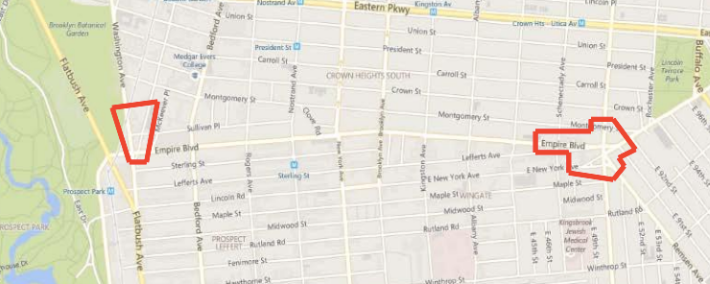
Thomas, a major figure in neighborhood debates over zoning, said that changing neighborhood demographics have affected how neighbors view city proposals -- regardless of any real connection between development and street safety projects like the Empire Boulevard reconstruction. “Any change is viewed with suspicion,” he said after the meeting. “At this point, honestly, anything the city does [in the district] will get complaints.”
Thomas said he hopes the proposal can overcome neighbors’ concerns about changes in the area. He said it was “common sense” to make safety improvements at the intersection in question. “I would not want to have it on my conscience that god forbid a kid gets killed,” he said today. “The primary number one thing is safety.”
The full board has yet to vote on the proposal, but it has come up for discussion previously, and some board members have said they're concerned about the loss of parking and think it will lead to increased congestion. At last night's meeting, Board Chair Demetrius Lawrence said the full board will take up the proposal at its meeting next Tuesday.
